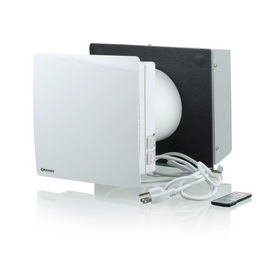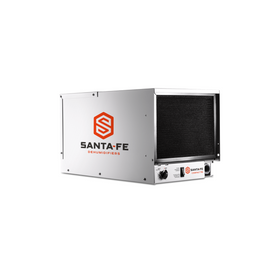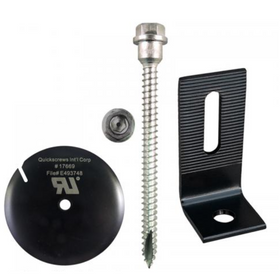
Rethinking Your Lawn With Permaculture Zones
Last Updated: Mar 17, 2025There are over 40 million acres of lawns in the United States, which means that a few different grass species are the most widely “cultivated” crop in the United States. But we can’t eat grass, and very few homeowners dedicate the grass in their lawns as pasture for a small flock of sheep or goats. Simultaneously, in 2018, there were just over 2 million farms across the United States, meaning that less than 2 percent of the US population self-identified as farmers. The opportunity? Transforming some of those 40 million acres of lawns into something more beneficial for you, the homeowner. Learning about permaculture zones, described below, is a great first step to designing healthy, edible landscapes.
What’s the problem with lawns?
American homeowners use well over 90 million pounds of herbicides every year to maintain their lawns' green, manicured grass. The Earth Institute at Columbia University estimates that anywhere between 30 and 60 percent of urban fresh water is used for watering lawns. At the same time, an additional 17 million gallons of fuel are spilled while refilling lawn and garden equipment, thus adding to the potentially toxic stormwater runoff from our yards.
While there are certain strategies to reduce the amount of irrigation needed for our lawns, we can get more creative for rethinking the idea of dedicating time, energy, and resources to intensively cultivating a “crop” that is inedible and that, more often than not, ends up poisoning the land. Transitioning the spaces around our home from infertile monocultures of green grass to productive, food-bearing, wildlife enhancing, ecologically resilient landscapes is an essential element of the resilient home.
Table of Contents
- What is Permaculture?
- Who Invented Permaculture?
- Permaculture Zones and Sectors
- What is Permaculture Sector Analysis?
- What Is Permaculture Zone Planning?
- Bottom line
What is Permaculture?
Permaculture is the practice of designing sustainable human habitats by following nature’s patterns and respecting nature’s limits. Unlike a small suburban garden of straight rows or a few raised beds in your backyard, permaculture is focused on the thoughtful design of agriculturally productive systems that have the diversity, stability, and resilience of natural ecosystems—and it can be applied in your own backyard.
Who Invented Permaculture?
The term “permaculture” was first coined by Bill Mollison, an Australian biologist, as a combination of the words permanent agriculture. According to Mollison, permaculture creates systems that are ecologically-sound and economically viable. These systems provide for their needs, don't exploit or pollute, and are sustainable for the long term. Permaculture uses plants and animals' inherent qualities coupled with natural landscape characteristics and structures to produce a life-supporting system for cities and countries, using the smallest practical area.
Permaculture Zones and Sectors
Sector analysis and zone planning are a fundamental part of designing a permaculture landscape around your home. While this may sound too technical for the average homeowner, it really only requires some thoughtful planning. These instruments are a unique contribution from the permaculture world and contribute to making your home’s site more beneficial for your family and the planet.
What is Permaculture Sector Analysis?
Sector analysis is related to the energies of nature that are external to our site but pass through our land and can affect it. These energies may include the sun, the wind, the rain, water flow, fire risks, the slope of the land, and others. In this sense, a sector analysis can also help in designing a sustainable home. Understanding the sun's angle and the orientation of our homes can help homeowners use passive solar design to reduce the external heating and cooling needs of our homes. Understanding how rainwater moves across our yards can help homeowners devise strategies to reduce erosion and stormwater runoff.
A sector analysis can also include factors such as a panoramic view you want to maintain, the part of your land where wild animals most often pass through, etc. Being aware of how these energies interact with your site through careful observation allows for a design process that minimizes the potential damage of these energies while maximizing the beneficial aspects. For example, knowing where the cold winter winds and the warm winter sun come from will help you decide how to angle your house and where you will need to plant a windbreak so that your home can be more energy-efficient and comfortable.
What Is Permaculture Zone Planning?
Zone planning is a design tool whereby the location of every component in your yard is determined by how often you need to use that component and how often you need to invest the energy to keep it working in your favor. The parts of your design that you use most often and need to pay the most attention to are placed closest to your house, while elements on your site that need less human intervention or are used less frequently are placed farther away.

For example, a kitchen garden where you regularly harvest vegetables and herbs for your everyday meals should be placed closer to your home, perhaps next to the kitchen for easy access. This proximity will allow you to better care for the vegetables, which tend to be high maintenance and avoid having to walk to some remote corner of your land to pick some basil for your evening pasta dinner. However, a small forest whose main purpose is wood production and wildlife habitat can be placed farther from the house. There is considerably less day-to-day upkeep involved in maintaining the forest. You would only need to visit the forest sparingly for routine maintenance, maybe weekly or monthly.
Permaculture asks homeowners to divide their land into up to six different zones (depending on the size of your lot), detailed below.
Zone 0: This is your house, and it should be located in a way that makes it the most energy-efficient and where it can offer other functions other than simply a dwelling place. For example, angling your house to face south (in the northern hemisphere) to take advantage of the sun´s light and warmth might allow homeowners to incorporate a rooftop solar panel system. Similarly, placing your home higher up on the slope of your land will allow homeowners to catch and store rainwater, distribute that water by gravity throughout your land for irrigation needs, and move water from your house to other parts of your land with a greywater recycling system.

Zone 1: This is the most intensively used zone in your yard and the most heavily managed. It is usually the area closest to the house. In this zone, you would place elements you access most often or need your most frequent attention. Some possible elements include a small kitchen garden, small fruit trees, a worm compost bin to process kitchen waste, propagation areas, sheds, rainwater tanks, fuelwood storage, living quarters for small animals such as rabbits, etc. Since this area is generally small, the soil is usually created through heavy mulching. The irrigation system can be of a type that requires substantial human intervention, such as drip irrigation. For many people living in urban areas with a small backyard, zone 1 might be your entire available land.
Zone 2: This zone is still heavily used, but less intensively than the elements placed in zone 1. In this zone, you may include a small fruit or nut orchard, compost bins, a chicken coop, a larger market garden for vegetables, and other perennials that have longer growing seasons. Instead of complete mulching usually, spot mulching (for example, around the trees in an orchard) is usually a better way to maintain soil fertility. For homeowners with a small yard, zone 2 might be nothing more than one or two fruit trees.
Zone 3: This zone is what is most often considered to be farmland. It is usually a larger piece of land located a bit farther from the house where the main crops are grown (both for home use and for the market). Pasture for animals is also a part of zone 3 if you choose to have animals on your site. Once established, these areas take less of your time to maintain, except at harvest time. Other elements in this zone could include larger orchards, grain crops, pastures for large livestock, dams or ponds for water storage, beehives, etc. In non-farm areas—possibly suburban or exurban sites—zone three might be a small section of the yard where homeowners can place a small pond from rainwater harvested from their roof or a small garden plot where they experience growing specialty grains like quinoa.
Zone 4: This area is a semi-wild area that still needs some management. It is usually a wooded area or perhaps a planned forest ecosystem that offers wild foods such as morel mushrooms or raspberries; it could also offer timber, firewood, or animal forage. The management of these forest areas (or grasslands if you live in the prairies) is usually achieved through browsing animals through the forest or managing saplings and undergrowth. Again, in smaller plots of land, zone four might be a wood line that separates your property from your neighbor where you can grow timber that can be harvested for your backyard fire pit.
Zone 5: This zone is meant to be an unmanaged area on your site, kind of like your own miniature wilderness conservation area. For people with lots of acreages, this may be the main part of your land. For others with about an acre or two, zone 5 may be a small corner of wetland at the edge of your site. It is always important to leave some area on your land free from human intervention to discover what nature would naturally do on your land. It is an opportunity for us humans to surrender our desire to control every part of “our” yard and learn from the natural cycles of nature.
Bottom line
The concept of dividing a landscape into “zones” is one of the most useful tools that permaculture offers to help homeowners design ecologically healthy landscapes that also provide abundant yields for much of our household needs. Even on a small plot of land, by observing the landscape and making a plan that matches your site, it is possible to transform the outdoor area from a somewhat useless lawn into a landscape that serves multiple purposes.
Tobias Roberts
Tobias runs an agroecology farm and a natural building collective in the mountains of El Salvador. He specializes in earthen construction methods and uses permaculture design methods to integrate structures into the sustainability of the landscape.










